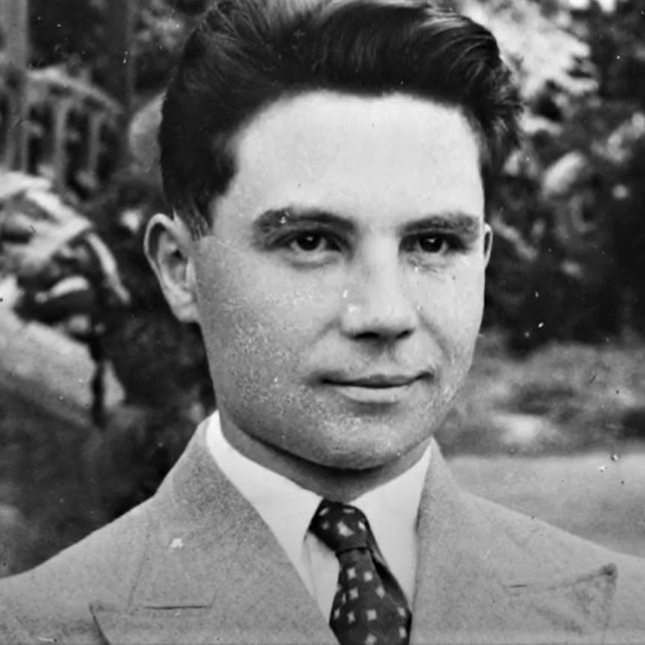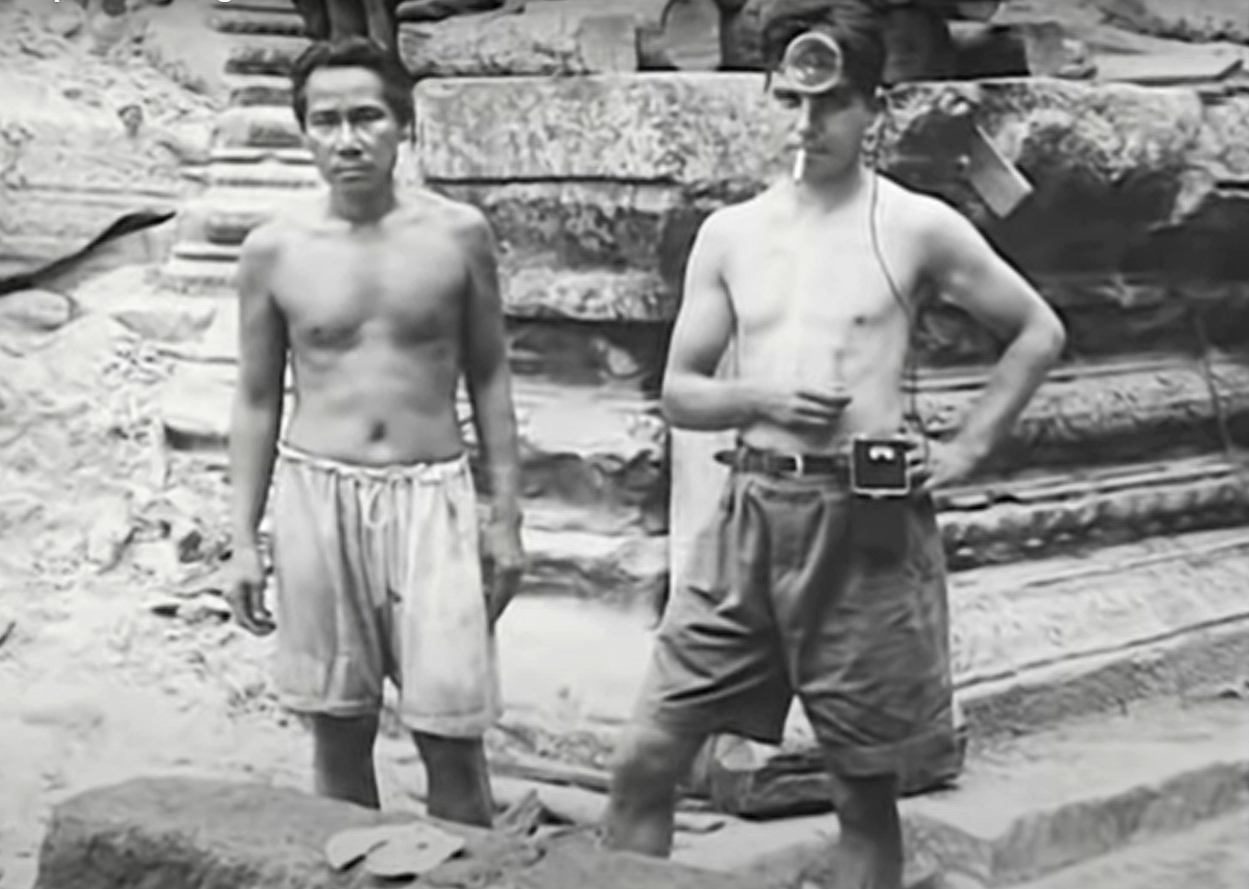Georges Trouvé

Architect and archaeologist Georges Alexandre Trouvé (2 Feb. 1902, Nantes — 18 Jul. 1935, Siem Reap) contributed to many majors discoveries in Angkor area, including Prasat Tor, Pre Rup Temple, the foundation steles of Preah Ko and Bakong, sites at the Roluos Group, or the Ak Yum temple on the banks of West Baray, during his short-lived mission from April 1931 to July 1935, when he died in his Siem Reap house.
On Aug. 18, 1933, Trouvé excavated from the Bayon inner cell the famous giant statue of a Buddha seated on a Naga. Two years later, he replaced Henri Marchal as Head of Conservation d’Angkor. He developed the practice of detailed Journaux de fouilles (Excavation Reports), with sketches and abundant details that remain of great importance for contemporary researchers.
Arrived in Southeast Asia in April 1926 as technical advisor to Crédit foncier de l’Indochine d’avril (until April 1931),
Trouvé had worked as an architect in Hanoi, designing several official building facades and teaching architecture and concrete mix process at the Hanoi School of Fine Arts. He was considered one of the most talented and promising French archaelogists,
In his Memoirs published in 1960, Trouvé’s mentor Henri Marchal validated the accepted version of the young archaelogist’s death as suicide, probably linked to marital life turmoil since Trouvé was then at his professional peak, his discoveries having been recognized by King Monivong of Cambodia only two months earlier. Trouvé’s wife, Madeleine Victorine Beaudet-Robin, nicknamed ‘Mano’ (they had ben married in Hanoi on May 16, 1931), had left him for Phnom Penh ‘wild parties’, and was rumored to have many affairs. According to Marchal and Henri Parmentier, she had asked for divorce the very eve of Trouvé’s death. Trouvé had been married previously (3 May 1923, Paris 6) to Marie-Antoinette Nesme, and they had divorced (15 May 1930, Hanoi), having three children together, Maurice, Edmond and André. [note: the names of Trouve’s successive wives is often mixed up, Marie-Antoinette Nesme being mentioned as his second wife and vice-versa.]
According to Maxime Prodromides, however, Marchal had written only two days after the death, in the same Journal de fouilles left by the deceased, that he had found the behavior of Mrs. Trouvé’s emissary’s to her husband “highly suspicious”, indirectly suggesting that ‘ce personnage’ (this character) could have killed him.
Publications
- “Étude sur le Prei Pràsàt, le Pràsàt Komnap et l’édicule qui abritait la cinquième stèle inscrite du Baray Oriental”, BEFEO, 32⁄1, 1932, p. 113 – 126.
- “Chronique. Laos. Rapport sur les monuments khmers au Laos, Inscription de Tham Lek, Inscription de Vat Luông Kau, Vestiges situés au sommet du Ph’u Malong”, BEFEO 33⁄1, 1933, p. 533 – 534.
- “Chronique. Cambodge, Chaussées et canaux autour d’Angkor Thom “, BEFEO 33⁄2, 1933, p. 1120 – 1127.
- “Le Pràsàt Tor, Description du monument et des vestiges avoisinants”, BEFEO 35⁄1, 1935, p. 207 – 232.
- “Chronique. Travaux de sondages exécutés sous le dallage du sanctuaire central d’Angkor Vat”, BEFEO 35⁄2, 1935, p. 483 – 486.

